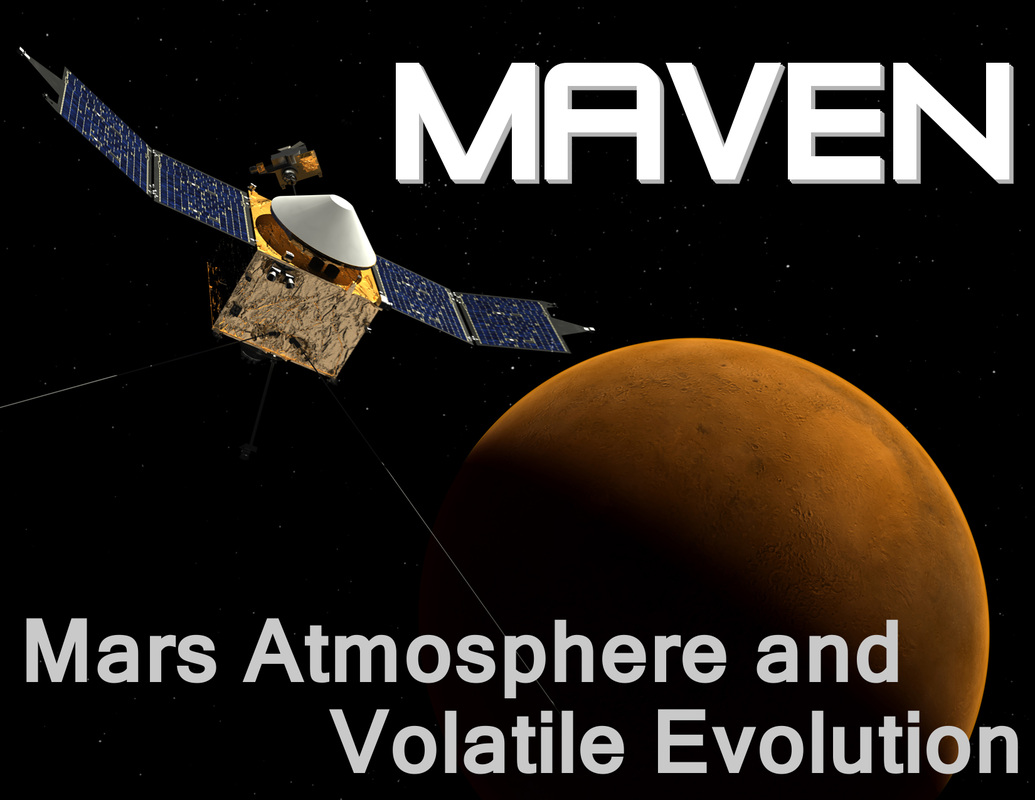 Mission Updates
Mission UpdatesSpacecraft Information
Instrument Overviews
Mission Overview (Timeline, Trajectory, Operations)
Science Overview
NASA’s MAVEN – Mars Atmosphere and Volatile EvolutioN Spacecraft is set for an ambitious science mission in orbit around Mars to study the planet’s atmosphere and find out how and why Mars has lost the majority of its atmosphere over the course of its evolution. MAVEN sets out to answer the question how the sun may have caused Mars to lose most of its atmosphere – turning a potentially habitable planet into a deserted world.
MAVEN is launched atop an Atlas V 401 rocket during the 2013 interplanetary window stretching from November 18 to December 7. After 300 days in its transfer trajectory to Mars, MAVEN inserts itself into a highly elliptical orbit around Mars in September 2014 to begin science operations.
Previous missions to Mars have revealed that the atmosphere and climate at Mars have changed over time. Evidence of a benign environment with at thick atmosphere and abundant liquid water was found on the surface of Mars. Scientists now want to know what processes caused Mars to lose its atmosphere and water. MAVEN takes a close look at the uppermost atmosphere of Mars – the region in which atmospheric loss processes are at work, enabling the spacecraft to study those processes and determine the role of solar activity in those processes.
In its elliptical orbit, MAVEN can combine two types of measurements – local in-situ measurements of particles when passing through the upper atmosphere, and global studies including ultraviolet imaging when the spacecraft is far away from the surface. In addition, MAVEN makes five deep dip maneuvers, to make measurements of the well-mixed atmosphere at lower altitudes.
MAVEN is set for a one-year primary mission that will be extended based on vehicle and instrument performance. MAVEN also serves as a communications relay terminal in orbit for the Mars rovers Opportunity and Curiosity to assist the Mars Odyssey spacecraft and Mars Reconnaissance Orbiter.
